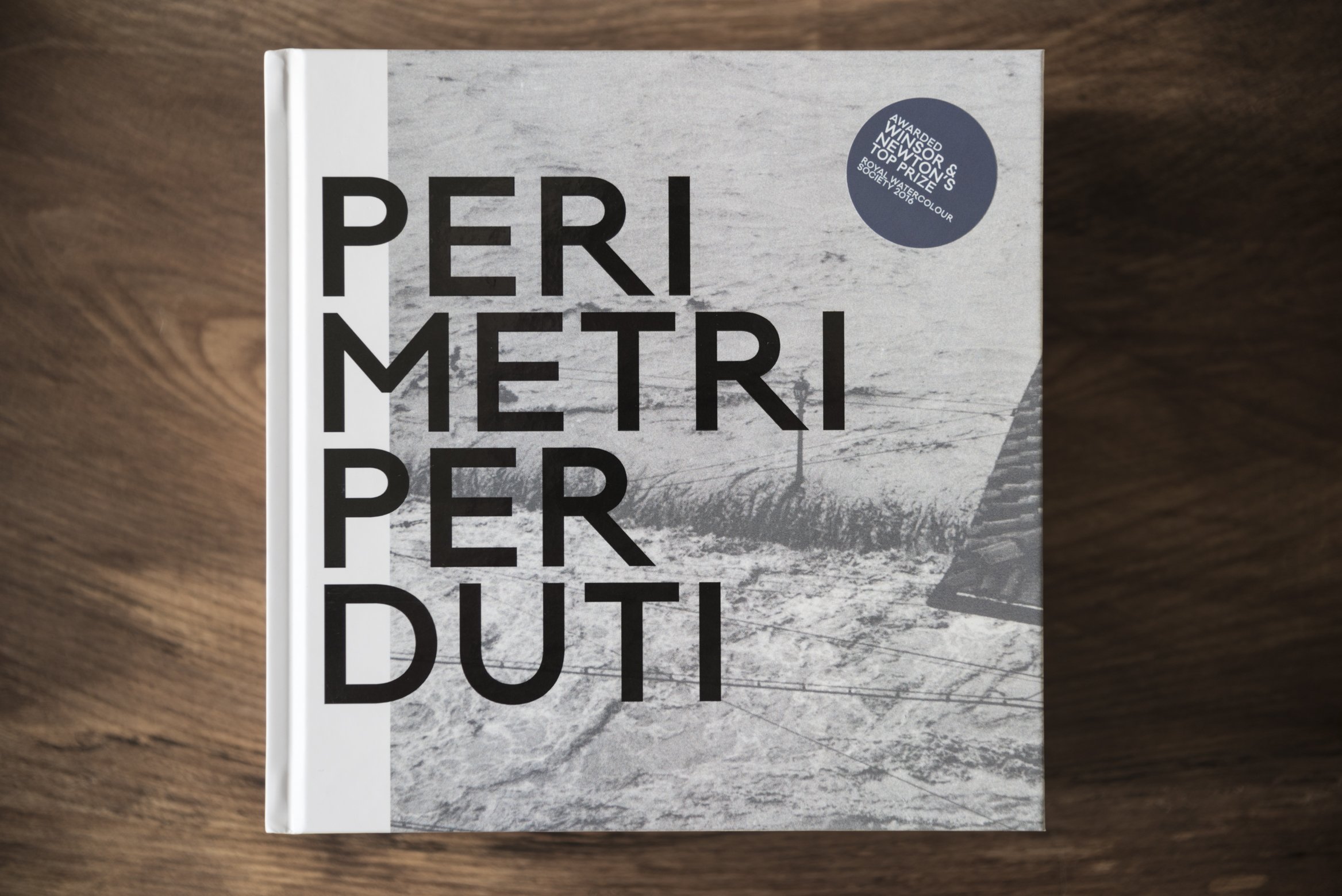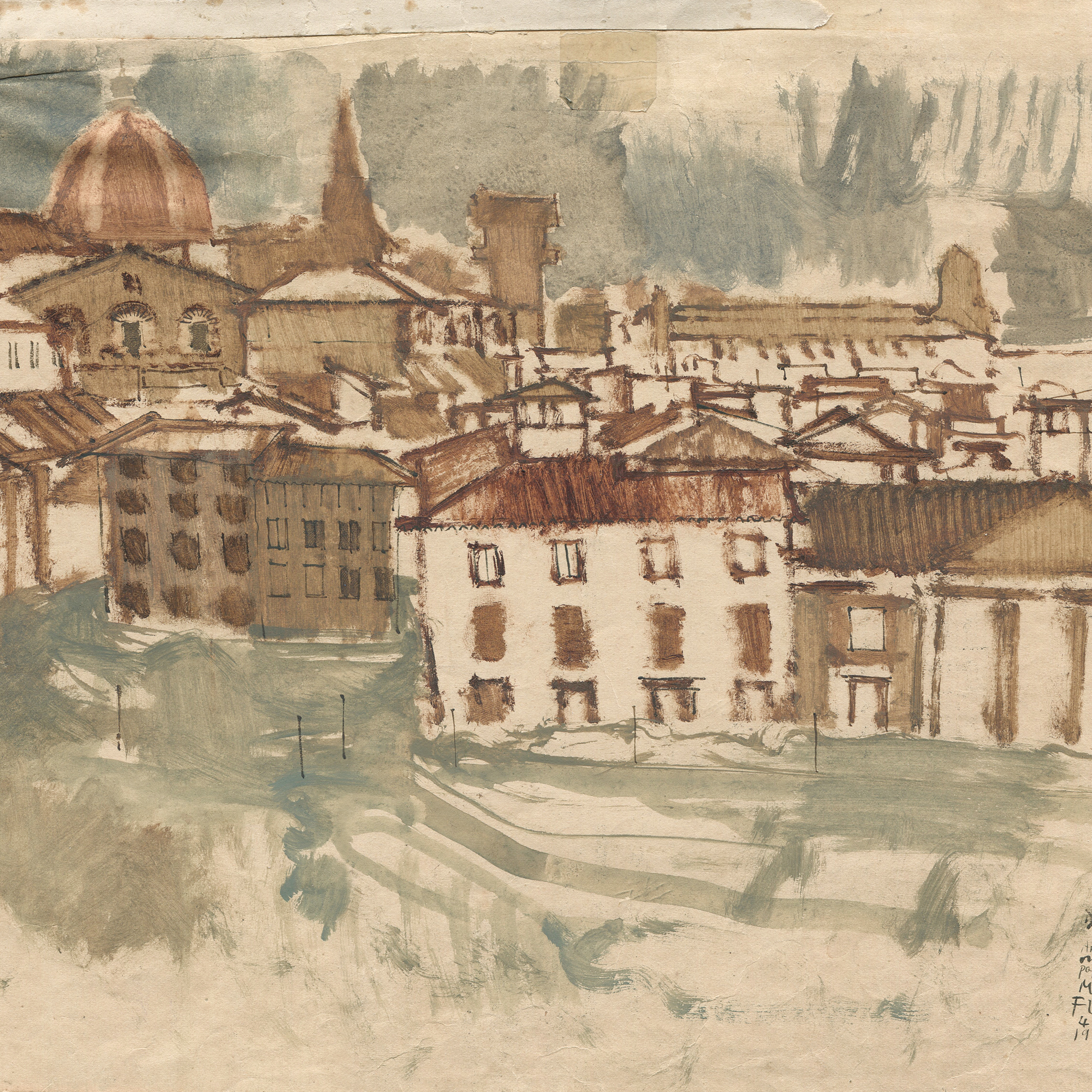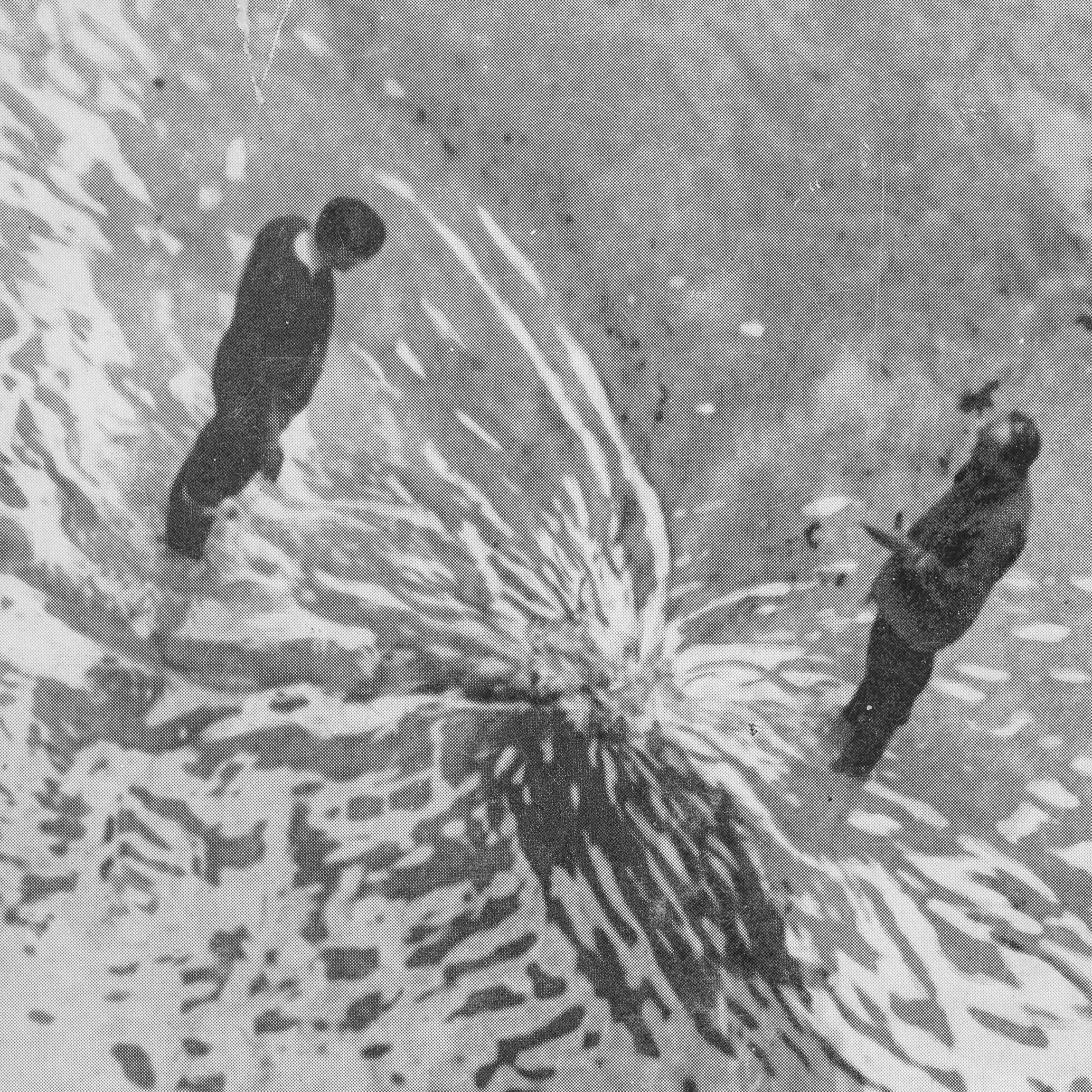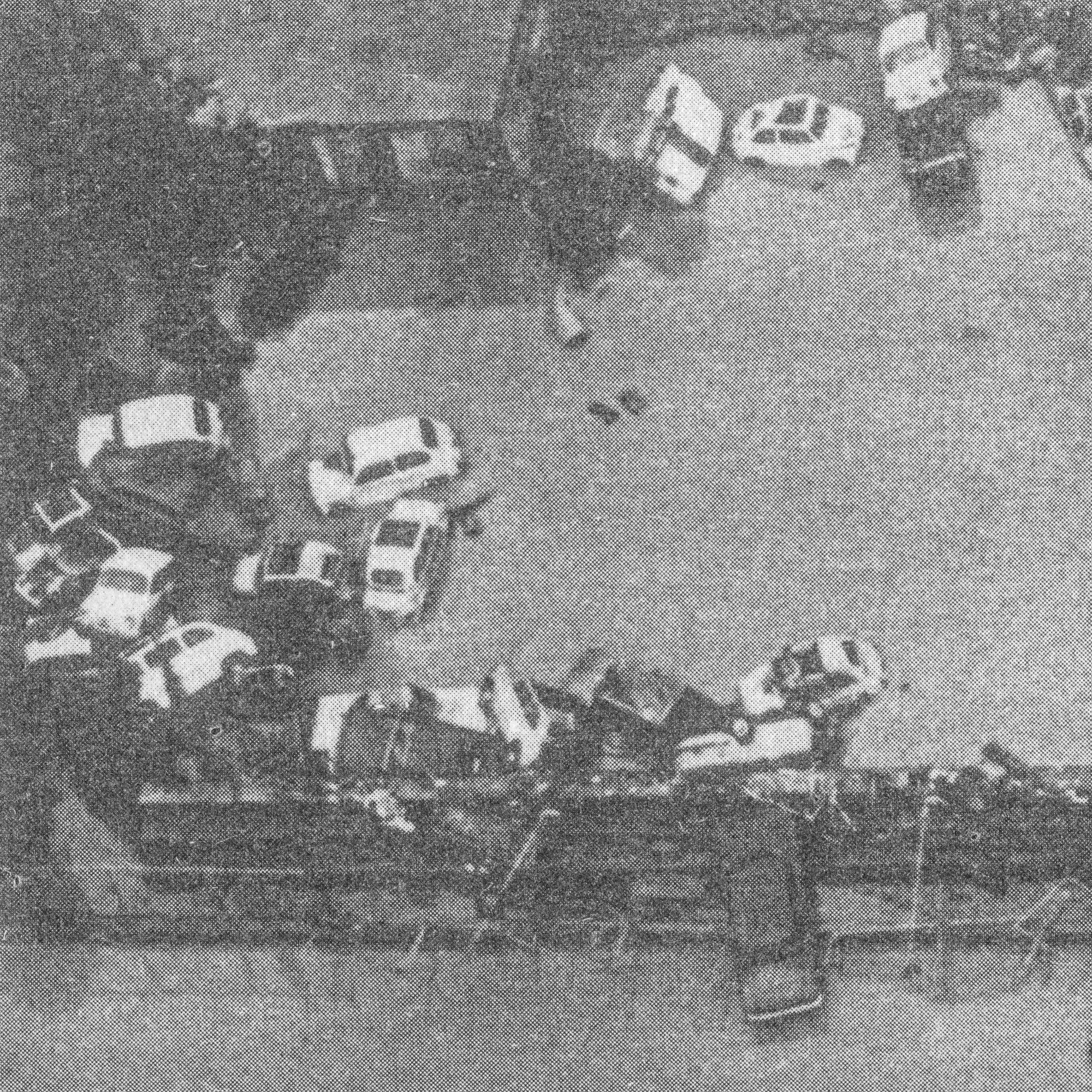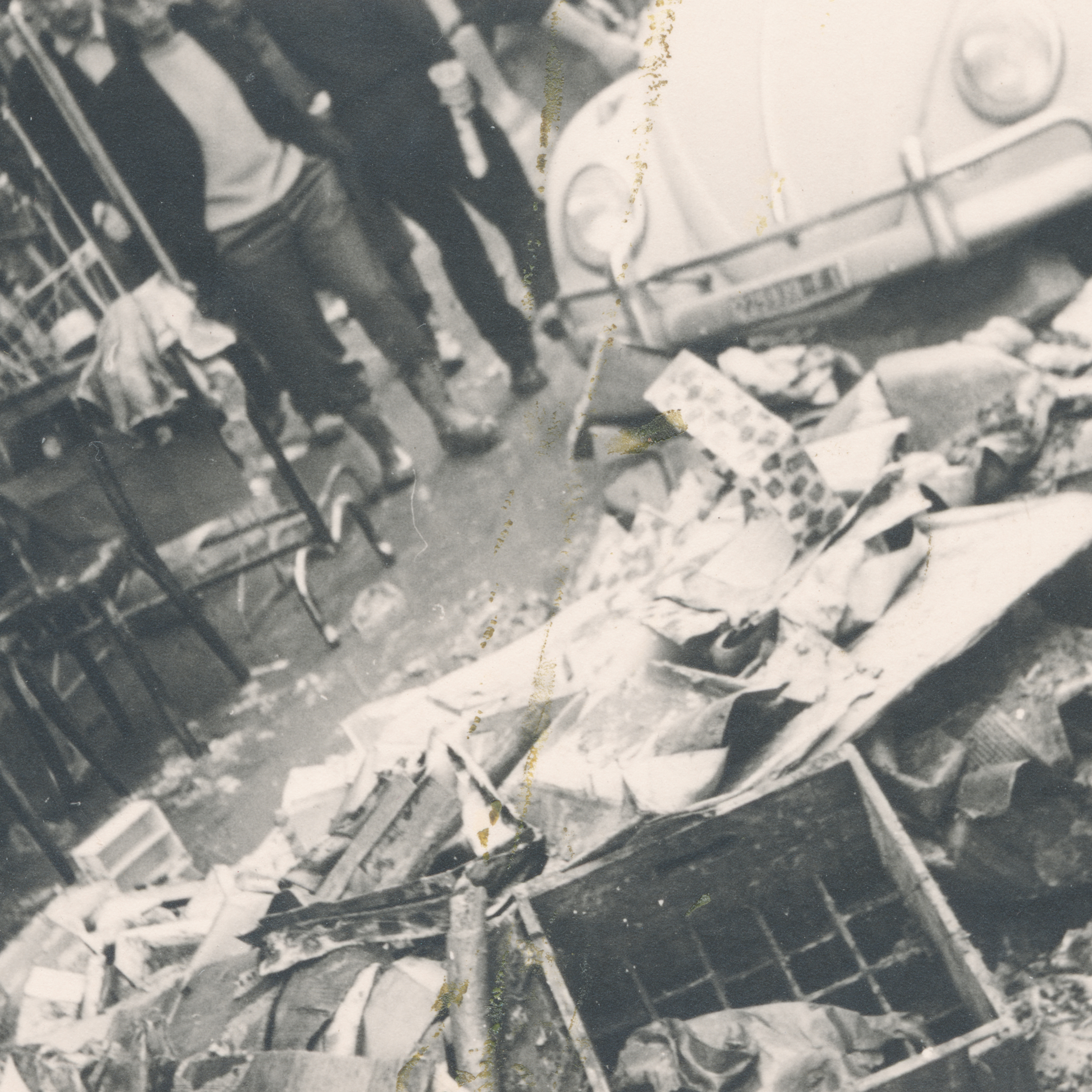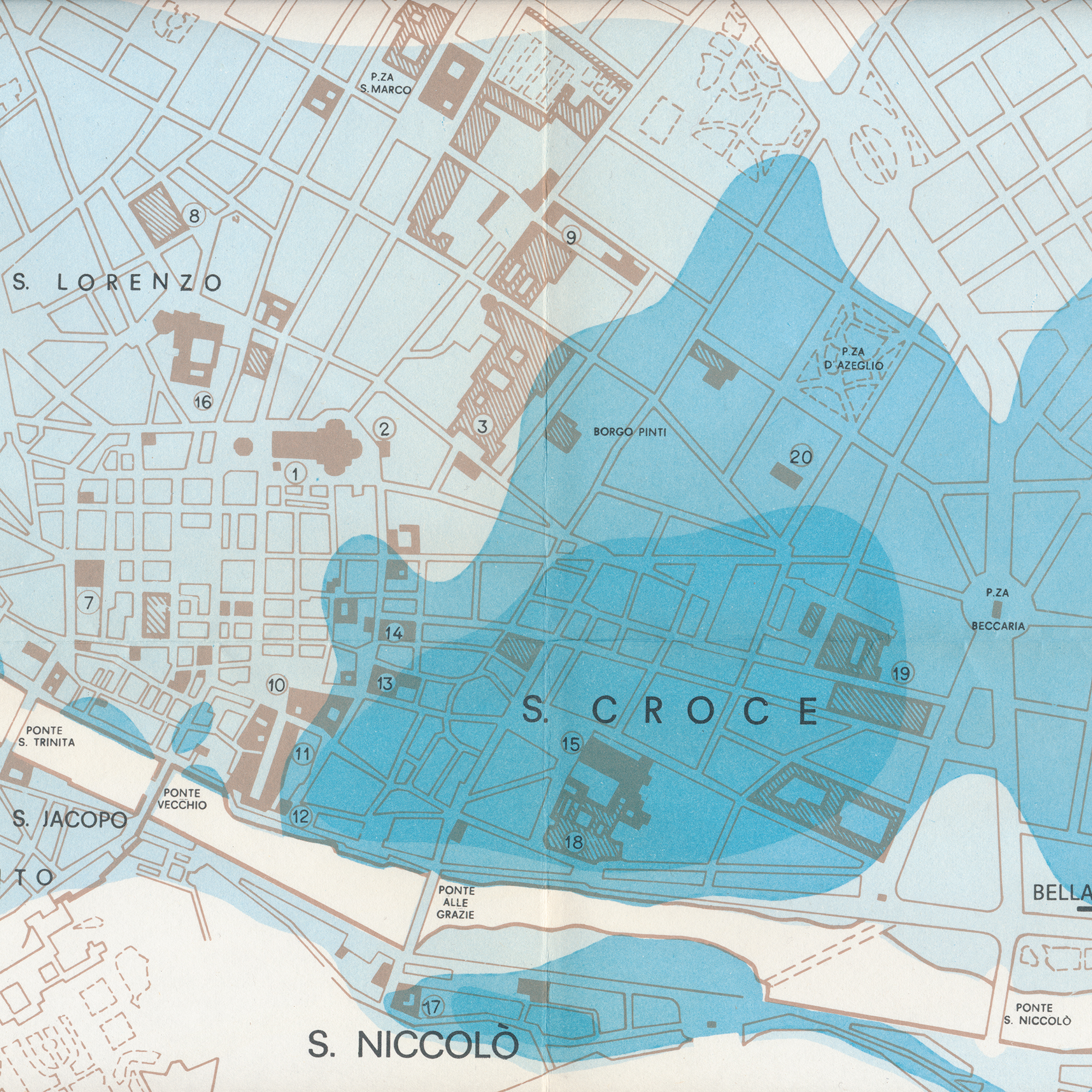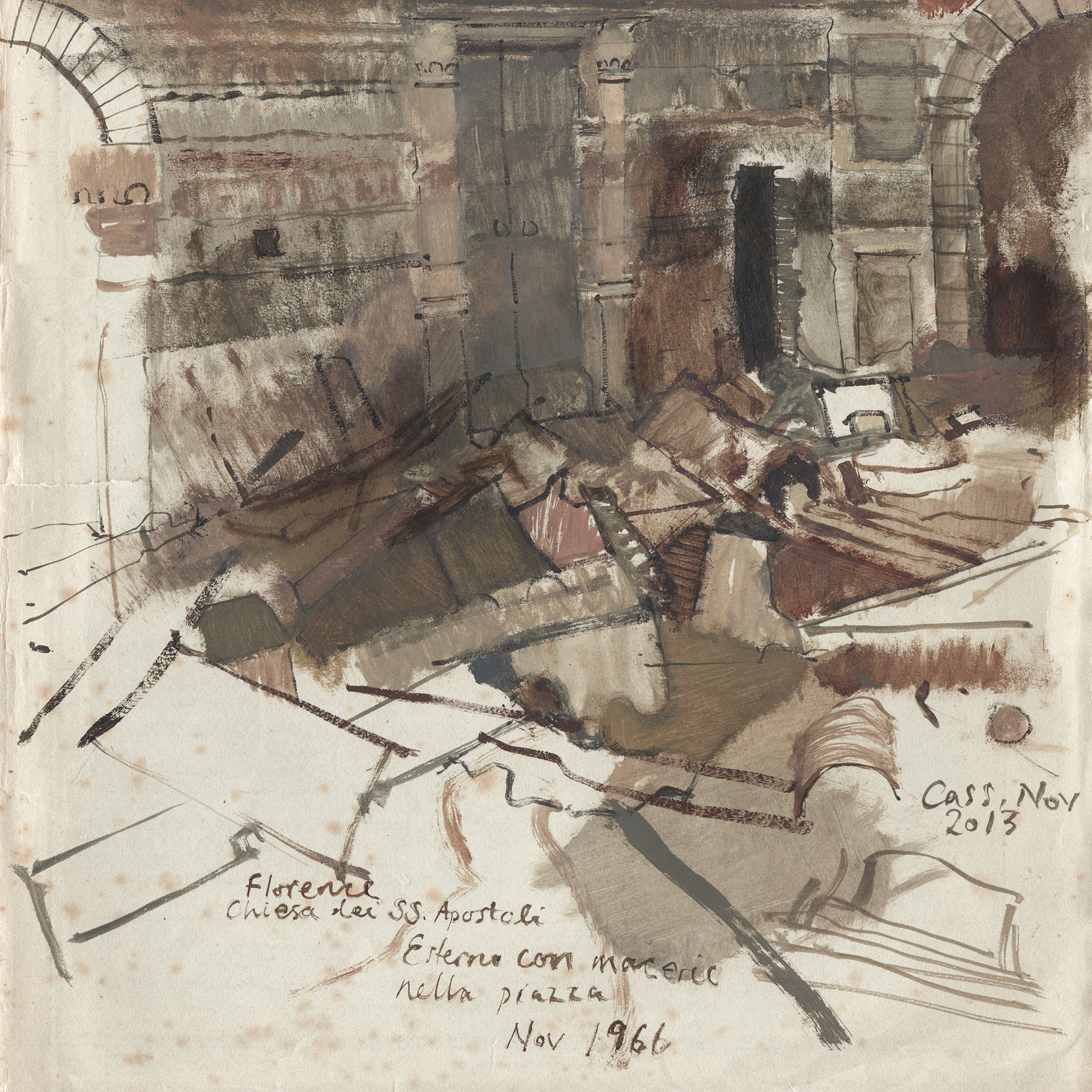
David Cass’ project Perimetri Perduti explores the events before, during & after the 1966 flood of Florence
David Cass’ artworks are often concerned with examples of climatic extremes. This series discusses the legacy of one of Europe’s most defining twentieth century environmental events. The project has been presented in the Lanfredini Palace, Florence; SACI, Florence; the Italian Cultural Institute, Edinburgh; and the Fruitmarket Bookshop, Edinburgh. Works from the series have also been exhibited in Bankside Gallery and The Scottish Gallery. The project is accompanied by a book, featuring artworks by Cass alongside texts from invited authors with a connection to Florence.
After a prolonged period of intense rain during the first days of November 1966, two Valdarno dams burst south of Florence. During the early hours of 4th November an enormous weight of water was propelled at great speed towards Florence. The Arno river burst its banks, filling every nook and crevice of the city. Mud, oil, fuel and contaminated water spread and rose – to 22 feet (6.7 m) in Santa Croce – covering almost 7000 acres. By the evening of the very same day the waters began to recede, leaving behind some 600,000 tons of mud and debris – a ton of mud for each inhabitant – and utter devastation. The legacy of the flood lives on today.
Cass first visited Florence in late 2010, on a Royal Scottish Academy scholarship. He has returned regularly since then and his artistic response to the city has gradually evolved. Inspired by artist James Hogg's letters written from Florence during November 1966 (published by SACI) his Florence flood artworks are responses to the history of this catastrophic and globally significant weather event.
The project links a past event with the present: describing the contemporary significance of the flood. Florence – an artist’s mecca – brought to its knees, made vulnerable. Vulnerable to extremes in weather, but also as a result of man. The artworks included in the project present an irony too, describing a stark contrast between the perceived image of the city – pristine and thriving – while demonstrating the reality of its susceptibility. The damage one event wreaked. Items and artefacts damaged in the flood are still under restoration today, in institutions around the world; yet, little has been done to safeguard the city from a similar event in the future.
“Florence exists not only for those that live there, holiday there & study there; but also in the collective memory & imagination.”

Perimetri Perduti illustrates the events leading up to and during the inundation on November 4th 1966; describing the aftermath and destruction; and touching upon the what if? What if this happens again: a fear that engulfed Florence during severe rain in late January 2014, in November 2016 and on November 3rd 2023. A fear shared by other Italian towns (and in other locations around the world) that have endured flooding or extreme weather events.
Historically, Florence has suffered a major flood once a century. As documented in the press ‘the situation has actually got worse than in 1966’ according to Raffaello Nardi, who heads up a special commission responsible for safeguarding the Arno river basin. This potential risk prompts concern, in part, because of the importance of this city: what it means to the world of art and culture. The irreplaceable items, objects, artefacts and architectural features its galleries, museums, churches and even its basements contain. Not to mention the intangible: the belief – thanks to the rich catalogue of those that have come before – that Florence is a mecca of the art world. Cimabue’s cross lost over 70% of its paint. Donatello’s Penitent Mary Magdalene was stained with thick brown oil. Ghiberti’s Gates of Paradise lost half of their golden panels. Twenty-seven thousand square feet of frescoes in Florence’s central churches and museums were almost completely destroyed.
The book features texts from authors with a connection to Florence, including: Robert Clark, Patricia Emison, David Hewson, Candia McWilliam & Giles Waterfield.
It also features first-hand accounts from mud angels who travelled to Florence to help clean & salvage. For the most part, the artworks in the series are not listed online, but a recent blog post featured a small set.
“A combination of records-of and responses-to the catastrophe of November 1966, Cass’ thoughtful and moving pieces are all the more powerful in that they are made by someone who was not yet born when the flood-waters hit Florence.”
Julia Race, Director of The British Institute of Florence

During the research period, the first display linked to the project took place in SACI gallery, Florence: an exhibition in collaboration with artist Stephen Kavanagh. A solo exhibition was then held in The Scottish Gallery, Edinburgh (Edinburgh is Florence’s official twin city) and works from the series then travelled to London (to the Royal Watercolour Society) where Winsor & Newton awarded a set of the below works their top prize for innovation in watercolour.
As interest in the project grew, three further events were held: most notable of which was an event commemorating the 50th anniversary of the flood – 4th November 2016 – in the headquarters of the British Institute of Florence, overlooking the Arno river. This exhibition ran for the whole of November 2016, with the opening event on the very night Florence was flooded fifty years earlier. The project was presented in The Fruitmarket Gallery’s events space in January 2017, and the Italian Cultural Institute shortly after that. Paintings & supporting materials were exhibited; talks given by Edinburgh's Lord Provost and Royal Scottish Academy Academician George Donald. The project was backed by a group of sponsors, who are listed below.
“In a single night in November 1966 the birthplace of the Renaissance was reduced to a sea of mud as the Arno burst its banks, engulfed some of the most famous and historic buildings and sights in Europe and took the lives of over 100 people.
And yet, as I discovered when I came to write a novel partly set during this extraordinary period, the event is now largely forgotten outside Florence itself, overshadowed in the public imagination by the dreadful aqua alta in Venice at the same time. The city, its stalwart people, and the thousands of ‘mud angels’ who flocked to Florence to help the city recover deserve better. During many visits to the city while I was writing The Flood I was astonished to see how the disaster continues be visible on the face of the twenty first century city, from the signs in the street marking the level of the water down to more subtle effects, among them the restoration of the damaged masterpieces in the Brancacci Chapel to remove the prudish additions of earlier centuries.
Four years on from working on that book David Cass’s evocative paintings took me straight back to that terrible night in November 1966, a timely reminder of the fragility of beauty against the elements of nature, and the defiant human spirit that swept away the mud and restored Florence to glory. I hope they find a place in the heart of the city fifty years on from the events that inspired them.”
“The time Cass has spent in the welcoming city of Florence has given him a powerful sense of the tragedy that they created, of the fragility of Florence’s beauty, of the ghost of those days of destruction that underlies the city’s present well being. In his drawings and paintings, often executed on paper intended for another ephemeral purpose, he conveys the random meaninglessness of that destruction. And he suggests that the memory of the floods has become an integral element of the city’s history – a suggestion more memorable for being made with apparent objectivity.
Relatively speaking, Cass is a newcomer to the city but for that very reason he comes to it freshly and with a heightened consciousness. His work makes it clear that he has thought about Florence, and felt for it, with especial tenderness. His ‘recollections’ of those days of devastation are all the more vivid for being imagined.”
Perimetri Perduti was made possible thanks to the following people…

Lesley & Brian Knox | Edinburgh
Simon & Angie Lewin | Edinburgh
Daniel Rawling | London
Giles Waterfield | London
Anthony Alioto | Vienna
Sandie Walker-Hepburn | Scottish Borders
Nick & Vivian Bannerman | Scottish Borders
Susan Mackie & Pascal Bernard | Paris
Patricia Emison | New Hampshire
Ray & Sal Landon | County Durham
Clare Mackie | Brighton
Candia McWilliam | Edinburgh
Kirsi Sutherland | Edinburgh
Claire O’Connor | Massachusetts
David & Susie Wolfenden | Scottish Borders
Collection Simon Paul: A Private Art Collection in Memory of Simon MacFadyen
Thanks to all those who contributed to this project: particularly the British Institute of Florence and its supportive director Julia Race. Thank you Patricia Emison for your continued enthusiasm. Our thoughts are with the late Giles Waterfield, who offered great support throughout the project. The book’s title was devised with the help of artist Giovanni Giacoia. Information on the banner photographs used above can be read here.
In spring 2022, David presented a project connected to this body of work as part of the 59th Venice Biennale. You can be part of that ongoing project: read more by following the link below:



